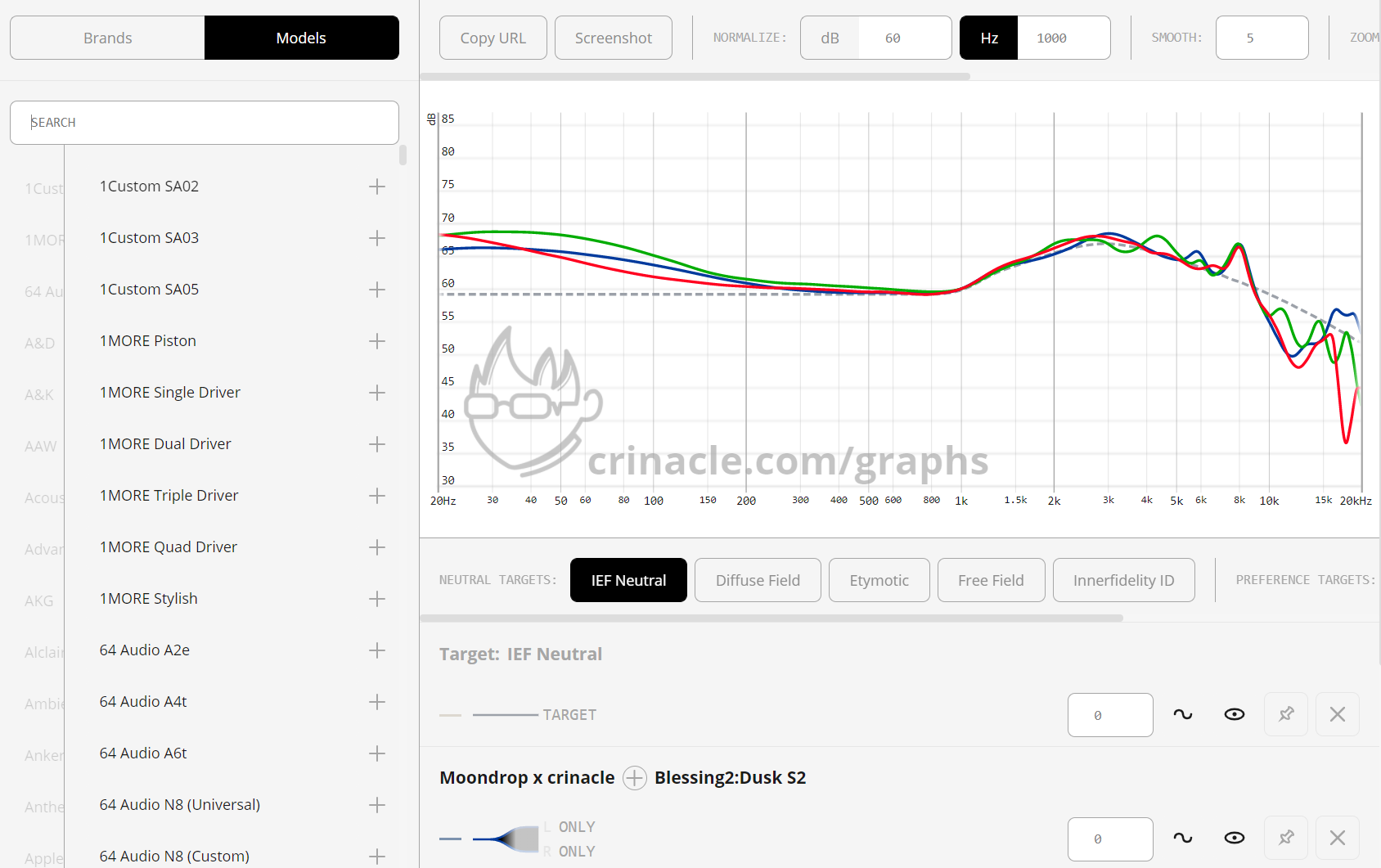Some days ago I was reading reviews of headphones and IEMs, and their frequency responses compared against a "neutral" target curve, and that got me thinking...
Contrary to a "preference" target curve, a "neutral" target curve, as far as I know, is defined by using a head (+torso?) simulator with mics where the ear drums are, and they measure a flat response speaker on axis in an anechoic room. The captured flat response gets a "pinna gain" in the high mids to treble area and voilá: this is the target curve for all headphones and IEMs to be compared to, at least using that specific head (+torso) simulator. Great.
A few things I don't get and maybe someone can clarify for me.
The first is:
1. It should not matter what type of transducer, be it a full sized headphone or IEM being measured, as long as it reaches the same "neutral" target curve captured by the mics, right?
But moving on, as we know, a speaker in an anechoic room is NOT representative of how it sounds in a typical room. Because of the speaker directivity (bass radiates all around the speaker, and as frequency increases, it gradually closes into on axis for mids and treble), in the main listening position, it measures as a "slope" response: Toole's book figure 12.4d, which he remarks as a "slope in the range of −0.4 to −0.5 dB/octave is a good descriptor".
2. Since an album is mixed and mastered using a speaker in a room as a reference, intended to be heard with speakers in a room as well, shouldn't a "neutral" target curve for headphones and IEMs use the same "sloped neutral" response as a target?
And that is not what I see: headphones or IEMs "neutral" target curves (why are they different? Question 1 above) have flat bass and mids until it reaches the pinna gain area.
3. Could this explain the "preference" target curves, which have increased bass, as an average of people trying to mimic the slope of a speaker in a room?
Adding all things, I suppose a true "sloped neutral" target curve should be defined by: a head (+torso?) simulator, in an anechoic room, with a flat speaker, playing a sloped response, and this reference be used by both headphones and IEMs.
And for fun.

Contrary to a "preference" target curve, a "neutral" target curve, as far as I know, is defined by using a head (+torso?) simulator with mics where the ear drums are, and they measure a flat response speaker on axis in an anechoic room. The captured flat response gets a "pinna gain" in the high mids to treble area and voilá: this is the target curve for all headphones and IEMs to be compared to, at least using that specific head (+torso) simulator. Great.
A few things I don't get and maybe someone can clarify for me.
The first is:
1. It should not matter what type of transducer, be it a full sized headphone or IEM being measured, as long as it reaches the same "neutral" target curve captured by the mics, right?
But moving on, as we know, a speaker in an anechoic room is NOT representative of how it sounds in a typical room. Because of the speaker directivity (bass radiates all around the speaker, and as frequency increases, it gradually closes into on axis for mids and treble), in the main listening position, it measures as a "slope" response: Toole's book figure 12.4d, which he remarks as a "slope in the range of −0.4 to −0.5 dB/octave is a good descriptor".
2. Since an album is mixed and mastered using a speaker in a room as a reference, intended to be heard with speakers in a room as well, shouldn't a "neutral" target curve for headphones and IEMs use the same "sloped neutral" response as a target?
And that is not what I see: headphones or IEMs "neutral" target curves (why are they different? Question 1 above) have flat bass and mids until it reaches the pinna gain area.
3. Could this explain the "preference" target curves, which have increased bass, as an average of people trying to mimic the slope of a speaker in a room?
Adding all things, I suppose a true "sloped neutral" target curve should be defined by: a head (+torso?) simulator, in an anechoic room, with a flat speaker, playing a sloped response, and this reference be used by both headphones and IEMs.
And for fun.
Last edited:



